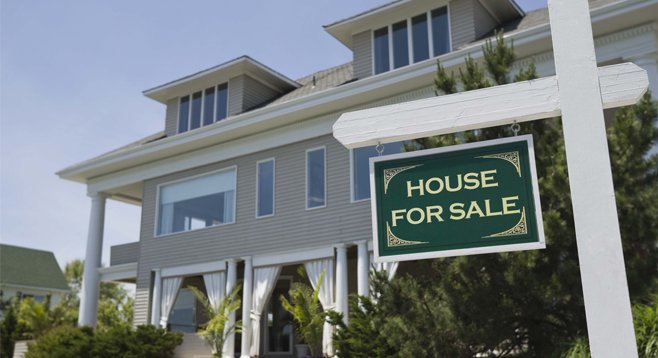 Facebook
Facebook
 X
X
 Instagram
Instagram
 TikTok
TikTok
 Youtube
Youtube

While housing prices continue to increase in other parts of the state, data released this week by the California Association of Realtors shows San Diegans' appetite for homes at inflated prices is waning.
Reports from two months ago found industry experts guardedly optimistic despite challenges, including declining affordability, tighter lending restrictions, and a retreat by investors increasingly finding the market overvalued.
"Low housing affordability and stringent underwriting standards are still holding back sales," admitted association president Kevin Brown.
Earlier this year, there was hope that sales would rebound during the summer, as most home sales are typically made in spring and summer months. But continued declines in both June and July closings have set a trend indicating fewer than 400,000 sales will close statewide by year's end, making for the slowest sales year since 2008, when the market was in free-fall on the heels of a 2006 peak.
"Lackluster sales volumes so far this year should come as no surprise, given the fact that in many California counties’ houses have simply become unaffordable," said Madeline Schnapp, director of economic research with market-data firm PropertyRadar, in a report on the heels of July's housing report. Schnapp noted that the disappearance of deals to be had via short sale or at foreclosure auctions is a major factor in accounting for the decline, as such "distressed" sales made up as much as half the market two years ago.
"The decline in affordability in concert with the rapid decline in lower-priced distressed properties for sale has exacted a toll on demand."
Still, while sales continue to decline, values are up in most places. San Diego, however, saw the first decline in median prices in recent memory, with a median-priced home falling from $531,350 in June to $523,070. Only 26 percent of potential buyers within the county could afford a mortgage payment on 80 percent of that price.
As further proof of a slowdown, properties are sitting on the market longer without selling. Last year, there were enough housing units available to meet 3.3 months' worth of demand locally; that figure jumped to 4.4 months' supply by July 2014.


While housing prices continue to increase in other parts of the state, data released this week by the California Association of Realtors shows San Diegans' appetite for homes at inflated prices is waning.
Reports from two months ago found industry experts guardedly optimistic despite challenges, including declining affordability, tighter lending restrictions, and a retreat by investors increasingly finding the market overvalued.
"Low housing affordability and stringent underwriting standards are still holding back sales," admitted association president Kevin Brown.
Earlier this year, there was hope that sales would rebound during the summer, as most home sales are typically made in spring and summer months. But continued declines in both June and July closings have set a trend indicating fewer than 400,000 sales will close statewide by year's end, making for the slowest sales year since 2008, when the market was in free-fall on the heels of a 2006 peak.
"Lackluster sales volumes so far this year should come as no surprise, given the fact that in many California counties’ houses have simply become unaffordable," said Madeline Schnapp, director of economic research with market-data firm PropertyRadar, in a report on the heels of July's housing report. Schnapp noted that the disappearance of deals to be had via short sale or at foreclosure auctions is a major factor in accounting for the decline, as such "distressed" sales made up as much as half the market two years ago.
"The decline in affordability in concert with the rapid decline in lower-priced distressed properties for sale has exacted a toll on demand."
Still, while sales continue to decline, values are up in most places. San Diego, however, saw the first decline in median prices in recent memory, with a median-priced home falling from $531,350 in June to $523,070. Only 26 percent of potential buyers within the county could afford a mortgage payment on 80 percent of that price.
As further proof of a slowdown, properties are sitting on the market longer without selling. Last year, there were enough housing units available to meet 3.3 months' worth of demand locally; that figure jumped to 4.4 months' supply by July 2014.
Comments